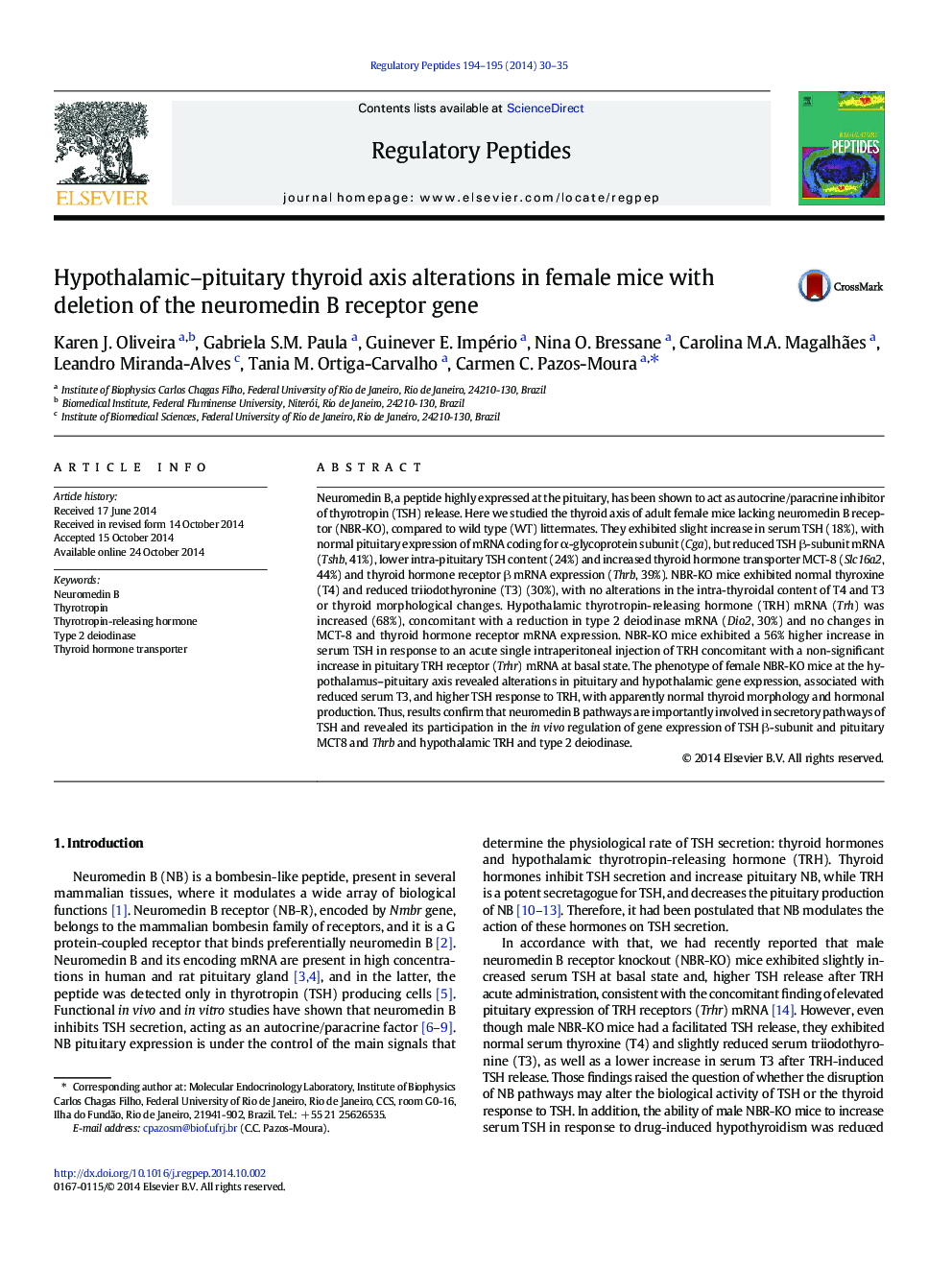| Article ID | Journal | Published Year | Pages | File Type |
|---|---|---|---|---|
| 2022370 | Regulatory Peptides | 2014 | 6 Pages |
•NBR-KO female mice present decreased intra-pituitary thyrotropin reserve.•NBR-KO female mice exhibit reduced hypothalamic type 2 deiodinase expression.•Hypothalamic TRH expression is increased in NBR-KO female mice.•NBR-KO female mice have decreased T3 with normal thyroid morphology.•Pituitary MCT8 expression is increased in NBR-KO female mice.
Neuromedin B, a peptide highly expressed at the pituitary, has been shown to act as autocrine/paracrine inhibitor of thyrotropin (TSH) release. Here we studied the thyroid axis of adult female mice lacking neuromedin B receptor (NBR-KO), compared to wild type (WT) littermates. They exhibited slight increase in serum TSH (18%), with normal pituitary expression of mRNA coding for α-glycoprotein subunit (Cga), but reduced TSH β-subunit mRNA (Tshb, 41%), lower intra-pituitary TSH content (24%) and increased thyroid hormone transporter MCT-8 (Slc16a2, 44%) and thyroid hormone receptor β mRNA expression (Thrb, 39%). NBR-KO mice exhibited normal thyroxine (T4) and reduced triiodothyronine (T3) (30%), with no alterations in the intra-thyroidal content of T4 and T3 or thyroid morphological changes. Hypothalamic thyrotropin-releasing hormone (TRH) mRNA (Trh) was increased (68%), concomitant with a reduction in type 2 deiodinase mRNA (Dio2, 30%) and no changes in MCT-8 and thyroid hormone receptor mRNA expression. NBR-KO mice exhibited a 56% higher increase in serum TSH in response to an acute single intraperitoneal injection of TRH concomitant with a non-significant increase in pituitary TRH receptor (Trhr) mRNA at basal state. The phenotype of female NBR-KO mice at the hypothalamus–pituitary axis revealed alterations in pituitary and hypothalamic gene expression, associated with reduced serum T3, and higher TSH response to TRH, with apparently normal thyroid morphology and hormonal production. Thus, results confirm that neuromedin B pathways are importantly involved in secretory pathways of TSH and revealed its participation in the in vivo regulation of gene expression of TSH β-subunit and pituitary MCT8 and Thrb and hypothalamic TRH and type 2 deiodinase.
